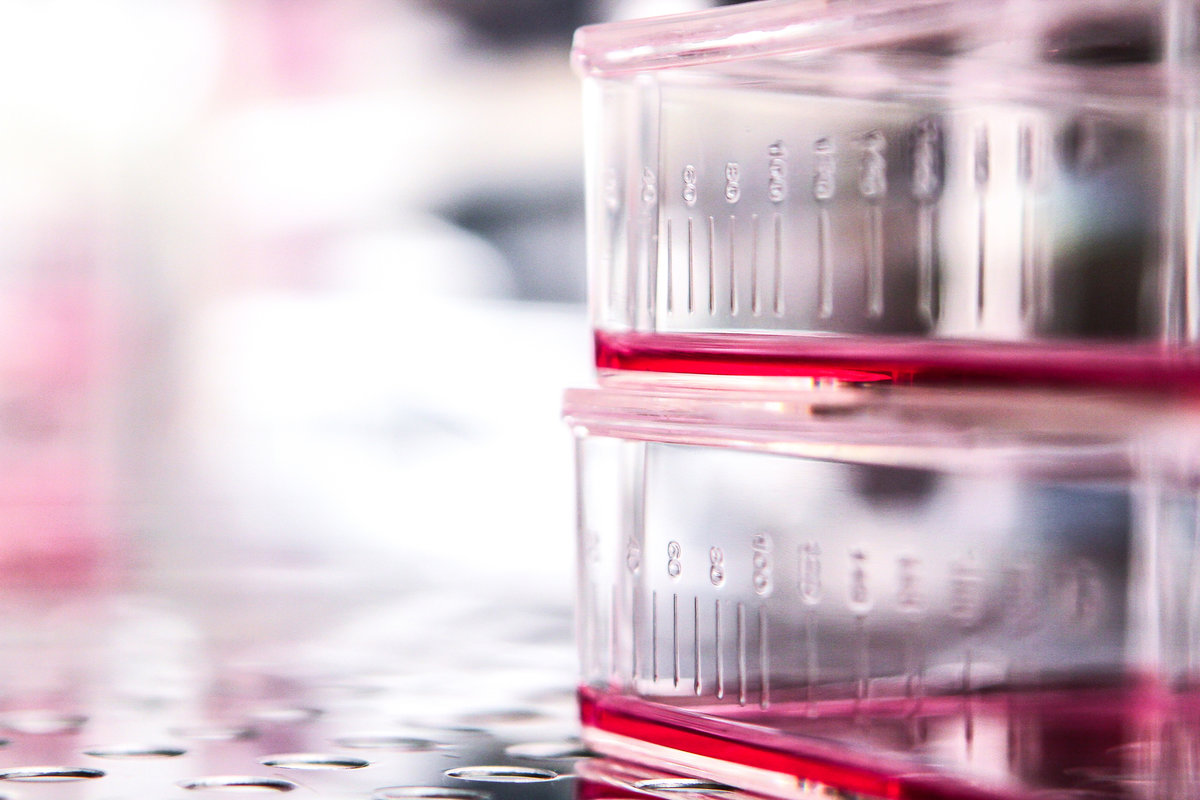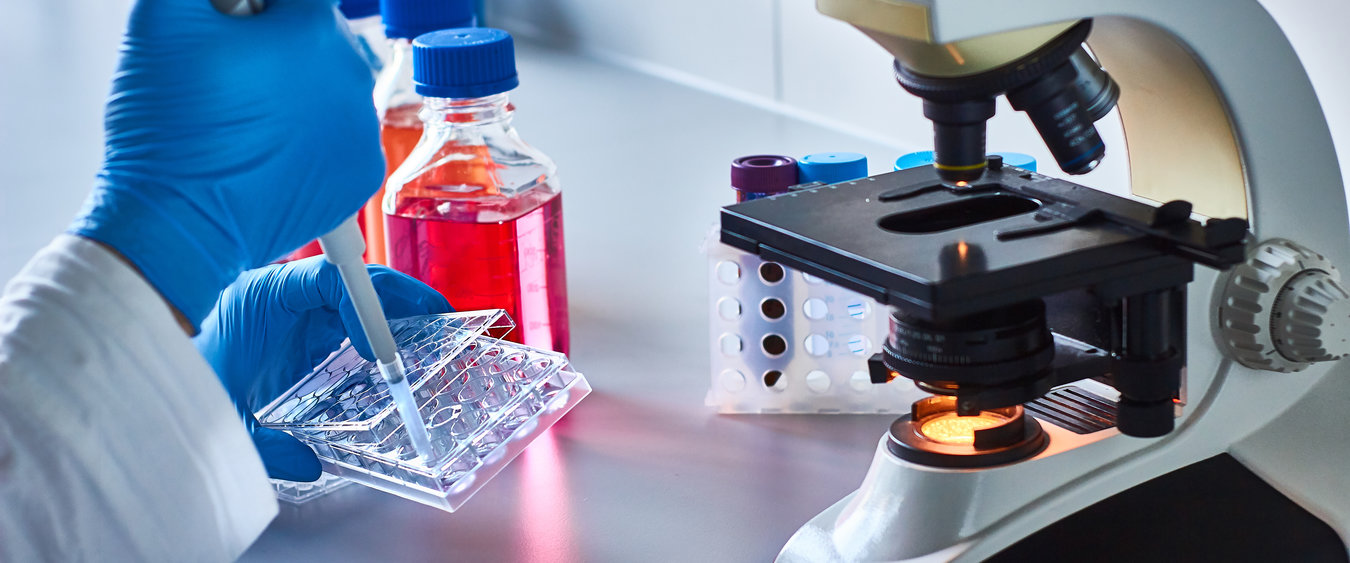Hydrogels, polymer-based substances with a high water content that replicate the characteristics of the extracellular matrix, can be used as 3D scaffolds. Due to its high degree of biocompatibility and biodegradability, gelatin is a favorite biomaterial for the fabrication of hydrogels. However, high purity levels are required for translation into clinical applications.

human cells culture with gelatin hydrogel (for tissue engineering)
In tissues engineered on scaffold, contamination with elevated levels of endotoxins and other pyrogens might create unwanted immune reactions once implanted in the patient and as a result effectively risking failure of the implant and endangering the patient’s health. Similarly, since (chronic) inflammation can transform cells and induce tumor growth, the use of ultra-pure biomaterials helps avoiding deregulated cell growth and tumorigenic constructs. Moreover, endotoxins can negatively impact cellular growth, morphology, differentiation, inflammation and protein expression even at very low levels (<100ng/ml). Using low-endotoxin medical-grade gelatin as biomaterial for scaffolds minimizes unwanted immune responses and potential tumorigenicity or rejection of the transplanted hydrogel.

cell culture and storage with gelatin hydrogel for cell viability, for tissue engineering
As a highly purified biomaterial, X-Pure gelatin can be used to create hydrogels with the desired mechanical strength and natural cell attachment sites. This is required to provide a favorable biochemical environment for cell growth, migration and differentiation. A recent study has shown that X-Pure low-endotoxin gelatin based hydrogels promoted differentiation of mesenchymal stem cells to chondrocytes and reduced inflammatory response in peripheral blood mononuclear cells in comparison to a non-purified gelatin. In addition, X-Pure supplemented in the cell culture medium may also be a valid and improved alternative to undefined ECM/growth factor mixtures in combination with endotoxin-sensitive cells as was demonstrated for immune cells2. It therefore circumvents the problems associated with batch to batch variation and the overload of growth factors associated with undefined alternatives. Last, X-Pure offers opportunities for cell storage as it enhances endothelial cell viability in refrigerated storage conditions compared to non-purified gelatin3.
X-Pure can also be used in drug delivery systems and wound healing applications
Rousselot’s highly purified gelatins offer an enormous untapped potential in several emerging application areas such as drug delivery systems and wound healing. By adapting gelatin production parameters, both type A and B gelatins (hydrolyzed and non-hydrolyzed) can be produced and delivered pyrogen-free. Rousselot is the only producer of pyrogen-free versions of both types. This opens exciting new opportunities for applications where the choice of type of gelatin is important, for example, in drug delivery systems using gelatin nanoparticles to achieve the desired release profile of a drug4. X-pure gelatin can easily be combined with other compounds (e.g. API’s, biomaterials…) for the preparation of injectable micro- and submicron particles as well as colloidal gels that need to comply with the highest regulations and quality standards for clinical drug delivery. Finally, hydrolyzed X-Pure gelatin can be used for wound healing applications as it has been shown to accelerate proliferation of skin cells in vitro5.
Conclusion
Gelatin is still an underrated biomaterial for tissue engineering, however its potential for developing fully functional biomaterial-based therapeutics is limitless. To speed up research and developments in the field and to facilitate translation into the clinic, it is crucial to rely on premium biomaterials already at the early stage of research. X-Pure’s low-endotoxin gelatins provide the highest possible purity and safety profile and can therefore significantly improve research outcomes and patient’s safety. Endotoxin levels of X-Pure gelatins are among the lowest in the world and are available as a full range of purified type A and type B gelatins suitable for regenerative medicine applications. In addition, Rousselot is able to customize solutions and co-develop with its partners into highly innovative applications.
References
- Unpublished data Rousselot and University Medical Center of Utrecht
- Unpublished data Rousselot and Ghent University
- Unpublished data Rousselot and Ghent University
- A comparative study of type A and type B gelatin nanoparticles as the controlled release carriers for different model compounds. Aramwit et al. Materials Express, June 2015, American Scientific Publishers
- Unpublished data Rousselot
